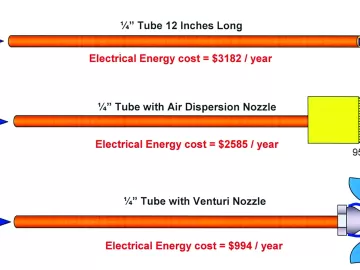Small Piston Air Motors Save Big Energy While Ensuring Safety
Vane motors can run at much higher speeds (2000 rpm and up), but piston motors tend to turn much slower – less than 1000 rpm. For slower speed applications, vane motors are mated with a gear reducer and called a gearmotor. The gearmotor can produce the higher torque and slower speed needed for some applications, but the gear reducer can add some drivetrain loss. While a piston air motor may not be able to replace a vane motor where high speed is needed, it can be a good choice for high torque/low speed applications.












